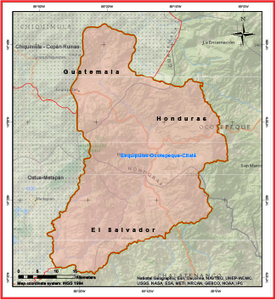Trifinio Aquifer


The original object of study in this case was the Esquipulas-Ocotepeque-Citala Aquifer System, referred to as Trifinio Aquifer because of the name of the area where it is located. This system appeared as shared by Honduras, El Salvador and Guatemala and was well representative of the many intermountain alluvial aquifers that overlie fractured hard rock basements, with complex permeability distribution linked to both fractures and primary porosity.
The last studies conducted in the framework of the project showed that there is no hydraulic continuity between the aquifers present in the Cuenca of Esquipulas, including the deeper one below the shallow unconfined one, and the groundwater found downstream (Citala-Ocotepeque Aquifer) in Honduras and extending further South East into El Salvador. The only connection between the two aquifer systems is represented by the Rio Lempa itself, which develops both functions of recharge and discharge of the aquifers.
Two specificities in this case study implementation are:
- The International Union for the Protection of the Nature (IUCN) is the local partner of UNESCO-IHP for the implementation of the activities.
- The Trifinio region covers an area of about 7,500 km2 in the border areas of Guatemala, Honduras, and El Salvador. The “Plan Trifinio” is a development plan for the three countries’ trans-national region. The Plan and its related bodies and Members (Technical Secretariat, Executive Secretariat, Countries representatives) consider the area as indivisible. The role of water in the plans, actions, and processes currently underway is raising its profile in relation to the attention given to other natural resources.












